#hemp farming
Text
With breathtaking views over Table Mountain, the world’s tallest building made of industrial hemp is set to open in Cape Town this June.
At 12 stories tall, the Hemp Hotel at 84 Harrison st. used carbon-negative materials that captured more carbon in the walls of the building than it emitted manufacturing them.
South African President Cyril Ramaphosa believes that the cannabis and hemp industry could create 130,000 jobs in places like Afrimat Hemp—the producer of the so-called “HempCrete” blocks which went into the hotel.
Made from water, lime, hemp, and a cement binder, the blocks from Afrimat Hemp are made of entirely South African hemp, which along with selling to corporate clients, are also used to build a number of social housing projects in South Africa and neighbouring Mozambique.
For the Hemp Hotel, Afrimat Hemp partnered with Wolf Architects in Cape Town for the build.
The company admit that hemp construction is 20% more expensive than traditional materials, but the urgency with which some corporations want to help tackle climate change offers them a unqiue opportunity: selling carbon credits—but with buildings, rather than trees.
“We can fund forests, or we can fund someone to live in a hemp house. It’s the same principle,” Afrimat Hemp’s carbon consultant Wihan Bekker told African News.
Company data shows that a 430 square foot house (40 square meters) produces 30 fewer tons of carbon than traditional methods, around what a mature tree can sequester in its roots across its lifetime.
-via Good News Network, 5/5/23
#hemp#hemp farming#hempcrete#solarpunk#sustainable architecture#carbon sequestration#carbon capture#carbon emissions#architecture#south africa#Cyril Ramaphosa#sustainability
184 notes
·
View notes
Link
Please share this with your friends.
2 notes
·
View notes
Text
Industrial Hemp- An Environmental & Economic Powerhouse
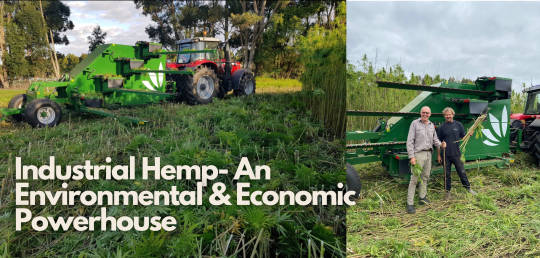
There are very few agricultural products that have made a significant increase in productivity of up to 455% since 2018. One at the top of this list is industrial hemp which has recorded massive gains since it became legal across the country.
Researchers predict the hemp industry will continue to grow as more states continue to benefit from its use, creating more job opportunities for hemp farmers and the industry’s overall growth.
A driving force behind the growth in the Australian Industrial Hemp industry is the AIHA (Australian Industrial Hemp Alliance), a not-for-profit Association. The purpose of the Alliance is to represent businesses and organisations involved in industrial hemp and associated products at a national level, in order to develop and grow the Australian industry.
Head over to their website for some great resources on the industry.

What Is Industrial Hemp?
Industrial hemp is a plant that belongs to the Cannabis sativa species, known for its use in the provision of industrial and consumer products. Hemp is cultivated in over 30 countries and is an essential source of raw material for many primary industries including food, agriculture & construction.
Hemp Vs. Marijuana
Many people tend to confuse industrial hemp and “marijuana” based on their visual similarities (and years of conditioning from propaganda campaigns). By distinction, industrial hemp contains more fibre and is very low in active tetrahydrocannabinol, known as THC, the psychoactive compound in marijuana and other cannabis varieties.
Marijuana, on the other hand, contains up to 15% to 40% of tetrahydrocannabinol, which makes it a highly intoxicating substance. Industrial hemp also has a higher percentage of CBD, making it a better alternative for industrial uses than marijuana.
Hemp plants grow typically in close proximity to each other- as little as 4 inches apart, whereas marijuana plants require up to six feet from each other for proper growth. The growth rate of these two also differs, considering marijuana takes about 60 to 90 days to grow, while hemp requires up to 108 to 120 days to grow.
Economic Benefits Of Industrial Hemp
Industrial hemp provides the sustainability and durability that make it stands out from its competitors. Almost every part of the hemp- its fibres, oils, leaves, and seeds provide its own economic benefits to man, some of which include the following:
Clothing and textile – industrial hemp is more cost-efficient and approximately 10 times more efficient than cotton. In addition, cotton growth will require the use of pesticides, which also has its side effects on the environment. Other benefits of hemp fibres include the production of nets, carpets, industrial textiles, shoes, etc.
Construction– hemp-based material makes a better alternative to wood as it is lighter, stronger, and more durable.
Protein and food supplement– Hemp oil is rich in protein and has high essential fatty acid content with very low saturated fats compared to soy products. Hemp oil can be used to make a variety of food and products. It is also less expensive to extract its protein than soybeans.
Low-cost fuel– non-renewable energy sources can be substituted with renewable sources like hemp that could be beneficial to man both environmentally and economically.
Larger profits for the hemp industry in the coming years- The US CBD market grew to $202 million in 2017 and is projected to become a billion-dollar market in the future. CBD is known for its therapeutic and health benefits for humans and animals. Hemp plants have fast growth and regenerative biology, which makes them effective in keeping up with the ever-increasing demand in the industry. We can’t wait to see it’s potential unlocked in Australia
Great productivity/opportunity for small farmers- hemp can be cultivated in most states (more details here), and the dense nature of its growth makes farmers produce more hemp per acre of farmland. It also saves the cost of production for farmers as there is little or no space for weed growth, reducing the effort and resources to get rid of weeds. In addition, hemp farming is an excellent alternative for farmers who want to move away from tobacco farming, especially in states that depend more on agriculture.
Hemp Production
Hemp grows best in well-drained soil with a pH in the range of 6.0 to 7.0. Hemp will hardly grow on clay soil or soils with high moisture content, given its high sensitivity to crusting and compaction.
Hemp is regarded as a short-day plant; maturity starts when the day length is below 12 hours of sunlight.
Hemp seed is ready for harvest when the seeds begin to break, though the plants remain green. At this stage, 70% of the seeds are set for harvesting, and their moisture content is about 25%. Delayed harvest may result in grain losses due to grain quality, bird damage, or excessive shattering of seeds.

The most common retting method involves leaving the crop to dry up in the fields for as long as five weeks for field decomposition. The dried crops are then bundled into a storage facility where they are further processed into finished products.
Final Considerations
Industrial hemp is a game-changer that has the potential to shape the future of agriculture in generations to come. The plant also plays a vital role on the global stage in helping impoverished communities both in economic and nutritional areas.
However, it is important that any farmer who will grow hemp must have the legal approval of the law. Industrial hemp producers should be able to identify the sales channel available for their products before they start production and ensure they have all the required permits in accordance with the law.
4 notes
·
View notes
Text
Check out my Instagram page, where I post photos of our grow, our products and more. Follow if you love hemp!
Cosmic River Farm (@cosmicriverfarm) • Instagram photos and videos
0 notes
Text
THE EXPERIMENT
We cashed in our chips and left modern society to try our hand at becoming hippiebillies.
The following is an excerpt from:
MY INSANE YEAR AS A HEMP FARMER
When Chels got pregnant with Aspen, we decided to do something radically different with our lives. We sold our home in Harrison and bought a 3,800 square-foot log cabin tucked away on fifteen acres of secluded paradise just a stone’s throw from the Buffalo National River. We cashed in our chips and left modern society to try our…

View On WordPress
0 notes
Text
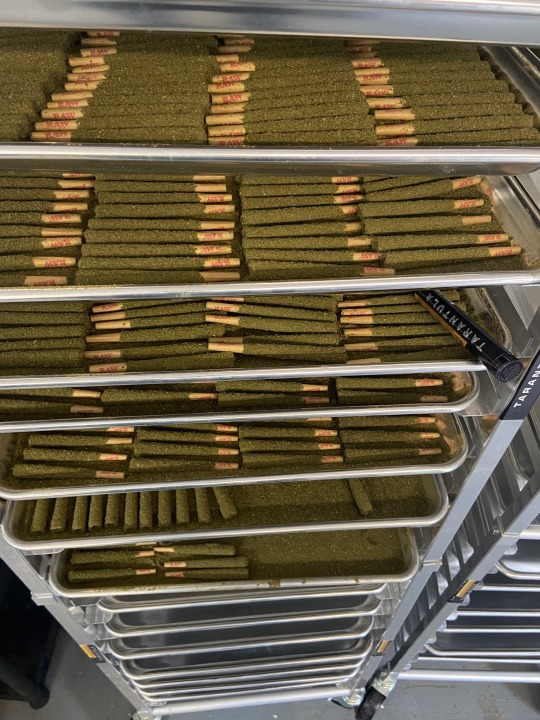
Our Tarantula Pre-rolls are made from our top-quality flower strains grown here at Exclusive Hemp Farms
#hemp#hemp farming#hempproducts#hempflower#hempderived#cannabis#delta8#thc o carts#thca#delta10#cbdproducts#cbd#cbdbenefits
1 note
·
View note
Text
ExtremeShake™ is a creamy and delicious, natural flavored, advanced low-carb, keto-friendly, probiotic protein shake with the added benefits of patented Sensoril® Ashwagandha. Sensoril® is a patented Ashwagandha supported by 11 clinical studies and is 8x the strength of standard Ashwagandha. Feelings of reduced stress, more restful sleep along with energy and mental acuity are common. Each shake contains a therapeutic serving of Sensoril®.
View my products at https://careysales.myctfo.com

#business#affiliate marketing#hempcommunity#hemp farming#advertising#cbd hemp#cbd and hemp#cbdpainrelief#building a business#sleep at night#lose weight#i just want to sleep#weightloss#can't sleep
0 notes
Text

NuLeaf CBD oil is the real deal. Really helps with inflammation pain, insomnia and anxiety and works great without the side effects related to prescription medications.Visit our website https://surpriseorganics.com/
Link in bio#natureza#insagood #kratos #cracks #happybirthday #instago #trendingreels #marijuana #cannabis #dope #weed #thc #pot #mmj #legalizeit #kush #hemp #smokers #yeson #califonia #promo #art #medicalmarijuana #love #cbd
#hempcbd#hempproducts#hemp farming#cbd vape#cbdoil#cbdhealth#cbdwellness#cbd#thc#cannabis#cbd gummies#ganja#sativa#bd/sm kitten#hemp#art#health#healthy life#beneficial
0 notes
Text

Are there any differences between indoor and outdoor cannabis?
The debate about indoor or outdoor cannabis quality is as old as Beatles vs. Rolling Stones. And honestly, there’s no right answer; it’s all about you as an individual consumer and what you like to smoke. Cannabis comes in many shapes, sizes and colors, but there is a fundamental question that needs to be answered for you in order to widen your choices as user: What is the difference between both types of marijuana?
If you’re a cannabis expert, you can easily tell the difference between growing outdoors and growing indoors. But for the new consumer, the difference between the two growing methods is not so obvious. They have both advantages and disadvantages, so whether you’re looking to grow your own cannabis or simply want to improve cannabis your identification skills, learning to differentiate them is very beneficial.
Read more here
#cannabis legalization blog#cannabis seeds#cannabiscommunity#medical cannabis#indoor#outdoor#hemp#hemp farming#grower#homegrowers#cannabis#legal cannabis#endocannabinoid#cannabinoids#cbdwellness#kannabia#kannabia blog#kannabia seeds#seeds
1 note
·
View note
Text
South Carolina cannabis fight persists in farmer’s lawsuit
South Carolina cannabis fight persists in farmer’s lawsuit
COLUMBIA, S.C. (AP) — A South Carolina farmer is suing several state agencies in federal court on grounds they conspired to deny him his due process rights after authorities in 2019 destroyed his hemp crop, which was grown in unregistered fields.
In a federal lawsuit filed Sept. 16, John Trenton Pendarvis alleges the South Carolina Law Enforcement Division, Department of Agriculture and attorney…
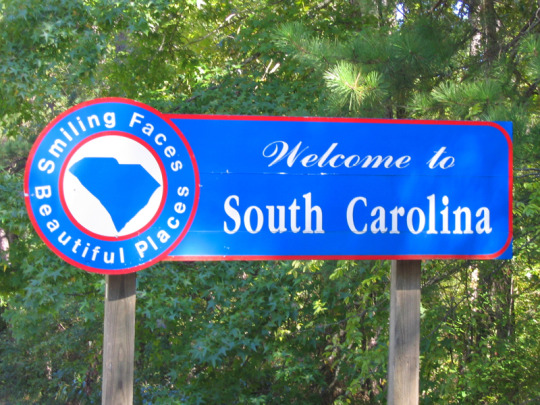
View On WordPress
0 notes
Text
Best quality hemp seed oils – Indus Hemp
Indus Hemp is a premium hemp-seed oil company, committed to providing the best quality and purity of the most beneficial hemp-seeds available. Our stores are centers of knowledge in which all customers can participate by asking any questions about Hemp seed, Selecting high quality containers for storing it and more. We supply readers with excellent quality products at affordable prices and we provide support through a knowledgeable staff that can answer your questions allowing you to maximize your experience with us.
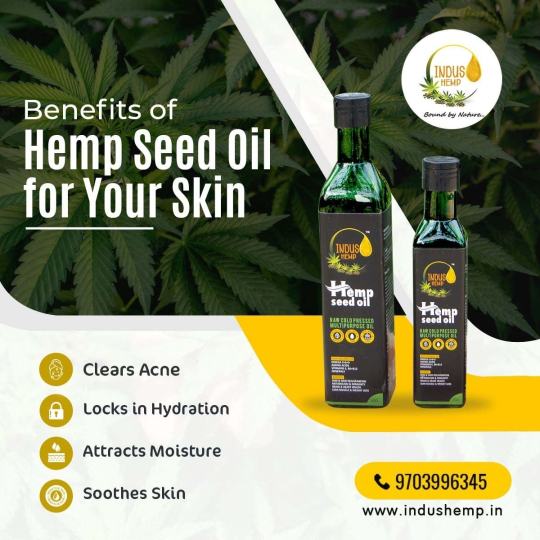
We offer a high quality, organic hemp seed oil that comes in a variety of flavors. Indus Hemp is dedicated to offering the highest quality oils and other hemp foods available.
Indus Hemp quality hemp oil products are certified naturally grown and extracted using the most modern hemp extraction methods. They offer an array of natural, organic hemp oil products with exceptional nutritional benefits.
Indus hemp oil is 100% organic, non-GMO & Non-Toxic and comes in four different varieties. Indus Hemp enjoys a reputation for the best quality hemp seed oils available in India.

Indus Hemp products are made from 100% pure hemp seed oil, harvested directly from the fields of India. We do not use any other ingredient in our products. All our blends are free of refined sugar, or artificial coloring and flavorings.

Contact US
Call Us: 9703996345
Address: Vayu 206, My Home, Madhapur, Hyderabad, Telangana - 500 081
Website: https://www.indushemp.in/
#hemp#industrial hemp#industrial hemp research foundation#hemp farming#hemp oil#mcq based on Indus valley civilization#quality assurance#Indus valley civilization mcq question#hemp investing#indus valley civilization mcq for competitive exams#Indus valley civilization mcq for upsc#mcq on Indus valley civilization#hemp processing#Indus valley civilization mcq for wbcs#nuts and seeds#hempco#hemp extraction#hempco food#variable speed#pills#tinyhemphouses#organic hemp products#hemp products and benefits#hemp products for weight management#hemp products for skin#hemp products for hair#hemp seed oil for dogs#natural hemp seeds#hemp protein powder#best quality hemp seed oils
0 notes
Link
“IsoHemp’s blocks, and alternatives made by many others, are made of hempcrete, a mix of hemp fibers, water, and lime or clay, which acts as a binder. Despite the simplicity of those natural ingredients, hempcrete — which consumers, businesses and governments around the world are growing to view as a sustainable building block of the future — has a dizzying array of benefits: it is fire resistant, provides soundproofing, insulates or stores heat (depending on external temperatures), repels mold and pests, and is malleable enough to allow for various aesthetic styles. Plus, hemp itself is a sustainable crop that needs few pesticides, is ideal for rotation, and has quick-growing roots that prevent soil erosion.
But most importantly of all, hempcrete has a very low carbon footprint. It requires three times less heat to create than concrete, weighs about one-eighth as much as concrete (leading to fewer transport-related emissions), and actively sequesters CO2 — according to one Cambridge University researcher, hemp absorbs between eight to 15 metric tons of carbon per hectare, significantly more than the two to six metric tons typically captured by forests.” -via Reasons to Be Cheerful
125 notes
·
View notes
Text
The Benefits Of Hempcrete
This is the house that Hemp built.
youtube
The benefits of using Hempcrete in every construction project.
Written by Casper Leitch
The benefits of Hempcrete is that it is a game-changer in the realm of Eco-friendly construction. If you're passionate about industrial hemp, hemp farming, or just want to see our planet thrive, you will be excited by the wonders of this revolutionary building material.
What is Hempcrete? It's a blend of industrial hemp, lime, and water coming together to form a supercharged building material. It's like nature's own recipe for sustainable construction, packed with benefits that go beyond your average brick and mortar.
An example is found in insulation uses. Hempcrete is like a cozy blanket for your home, but better. Its natural fibers create tiny air pockets, acting as a barrier against pesky temperature changes. Whether it's a scorching summer day or a chilly winter night, Hempcrete keeps things just right inside, saving you money on heating and cooling bills.
Hempcrete doesn't just keep you comfy, it keeps you safe too. Thanks to its fire-resistant properties, you can rest easy knowing your home is protected against potential disasters. No need to worry about flames spreading like wildfire, you are protected from fire in building built with Hempcrete.
While most building materials contribute to carbon emissions during production, Hempcrete does the opposite. As it cures, it actually sucks up carbon dioxide from the air, locking it away for good. It's like building your home while giving the planet a big hug.
Why aren't we seeing Hempcrete buildings popping up left and right? It all comes down to outdated regulations and misconceptions about industrial hemp. By spreading the word about the incredible potential of Hempcrete, we can push for policy changes that prioritize sustainability in construction. Imagine a world where every new building is a step towards a greener, cleaner future.
So whether you're into hemp farming, ending hemp prohibition, or just want to see our planet thrive, let's rally together and champion the widespread adoption of Hempcrete. Help educate business leaders and politicians in your community about the benefits, applications, and potential impact on the construction industry and the environment that the use of Hempcrete has.
The Insulation Powerhouse: Unraveling the Secrets of Hempcrete's Thermal Properties
youtube
Let's start by taking a closer look at Hempcrete's insulation capabilities – the cornerstone of its appeal as a sustainable building material. Traditional insulation materials often rely on synthetic fibers that are energy-intensive to produce and may contain harmful chemicals. In contrast, Hempcrete harnesses the natural properties of industrial hemp to create a highly efficient thermal barrier.
At the heart of Hempcrete's insulation prowess lies its unique composition. Made from a mixture of hemp hurds (the inner woody core of the hemp plant), lime binder, and water, Hempcrete forms a lightweight yet durable material with excellent insulating properties. The hemp fibers create a matrix of tiny air pockets within the material, effectively trapping heat during the winter months and repelling it during the summer – a phenomenon known as thermal inertia.
But what sets Hempcrete apart from traditional insulation materials is its ability to regulate humidity levels within a building. Unlike synthetic insulation materials, which can trap moisture and promote mold growth, Hempcrete acts as a natural moisture buffer, absorbing excess humidity when conditions are damp and releasing it when the air is dry. This not only helps to maintain a comfortable indoor environment but also contributes to improved air quality and reduced risk of mold-related health issues.
From an environmental standpoint, Hempcrete's insulation properties offer significant advantages over conventional materials. By reducing the need for artificial heating and cooling systems, Hempcrete helps to lower energy consumption and carbon emissions associated with building operations. Additionally, its natural composition makes it biodegradable at the end of its lifecycle, minimizing environmental impact and reducing reliance on finite resources.
Fire Resistance: Protecting Lives and Property with Hempcrete
In addition to its insulation properties, Hempcrete boasts impressive fire resistance – a critical feature for ensuring the safety and longevity of building structures. Unlike conventional building materials, which may combust or release toxic fumes when exposed to fire, Hempcrete exhibits a remarkable ability to withstand high temperatures without compromising its structural integrity.
The secret to Hempcrete's fire resistance lies in its mineral composition and low density. Lime, the primary binder used in Hempcrete, is inherently fire-resistant and acts as a natural flame retardant. When exposed to heat, the lime undergoes a process known as calcination, in which it releases water vapor and absorbs heat energy, effectively limiting the spread of flames and preventing the material from igniting.
Additionally, the low thermal conductivity of Hempcrete helps to slow the transfer of heat through the material, further reducing the risk of fire propagation. This combination of factors makes Hempcrete an ideal choice for fire-prone environments and high-risk applications where building safety is of utmost concern.
Beyond its immediate benefits for building occupants and stakeholders, Hempcrete's fire resistance has broader implications for public safety and disaster resilience. In regions prone to wildfires, hurricanes, or other natural disasters, buildings constructed with Hempcrete can serve as a protective barrier against external threats, providing invaluable peace of mind to residents and emergency responders alike.
Carbon Sequestration: Fighting Climate Change One Building at a Time
youtube
Perhaps the most compelling aspect of Hempcrete is its capacity for carbon sequestration – the process of capturing and storing carbon dioxide from the atmosphere. While traditional building materials often contribute to carbon emissions during production, Hempcrete operates in reverse, actively removing carbon dioxide from the air as it cures.
The key to Hempcrete's carbon sequestration potential lies in the carbon-negative nature of industrial hemp cultivation. Hemp plants absorb CO2 from the atmosphere during photosynthesis, converting it into biomass that can be used to produce a wide range of sustainable products, including building materials like Hempcrete. When hemp hurds are mixed with lime and water to create Hempcrete, the carbon stored within the plant material is effectively locked away for the lifespan of the building, reducing net carbon emissions associated with construction activities.
But the environmental benefits of Hempcrete don't stop there. In addition to sequestering carbon dioxide during its production, Hempcrete continues to contribute to carbon mitigation throughout its lifecycle. As a highly durable and long-lasting material, Hempcrete helps to minimize the need for frequent renovations or replacements, further reducing energy consumption and carbon emissions associated with building maintenance and disposal.
From an ecological standpoint, the cultivation of industrial hemp for Hempcrete production offers additional environmental benefits, including soil remediation, biodiversity preservation, and reduced reliance on fossil fuels and synthetic chemicals. By choosing Hempcrete over conventional building materials, builders and developers can play a significant role in combating climate change and building a more sustainable future for generations to come.
Overcoming Barriers to Adoption: Navigating Regulations and Changing Perceptions
Despite its numerous advantages, Hempcrete continues to face obstacles to widespread adoption, ranging from regulatory barriers to entrenched perceptions within the construction industry. In many countries, outdated regulations and misconceptions about industrial hemp have limited the use of Hempcrete in mainstream construction projects, relegating it to niche applications or experimental prototypes.
One of the primary challenges facing the widespread adoption of Hempcrete is the lack of standardized building codes and regulatory frameworks governing its use. Unlike traditional building materials, which have undergone rigorous testing and certification processes, Hempcrete is often subject to a patchwork of regulations that vary from region to region, making it difficult for builders and developers to navigate the permitting process and obtain approval for Hempcrete projects.
Additionally, misconceptions about industrial hemp and its association with psychoactive cannabis have contributed to stigma and resistance within the construction industry and regulatory agencies. Despite the fact that industrial hemp contains negligible levels of THC (the psychoactive compound found in cannabis) and is legally distinct from marijuana under most jurisdictions, lingering concerns about legality, safety, and performance have hampered acceptance of Hempcrete as a viable construction material.
However, as awareness of the environmental and economic benefits of industrial hemp continues to grow, momentum is building for policy changes that support the widespread adoption of Hempcrete in mainstream construction. In recent years, a growing number of countries have enacted legislation to legalize hemp cultivation and expand the use of hemp-based products, including building materials like Hempcrete. These regulatory developments, coupled with increasing demand for sustainable construction solutions, bode well for the future of Hempcrete and its potential to transform the built environment.
The Future of Hempcrete: Opportunities and Challenges in a Rapidly Evolving Landscape
youtube
Looking ahead, the future of Hempcrete appears bright, with ample opportunities for innovation and growth in the sustainable construction sector. As builders, architects, and developers continue to seek out Eco-friendly alternatives to conventional building materials, Hempcrete stands poised to capture a larger share of the market and emerge as a mainstream solution for sustainable building projects.
One of the key drivers of growth for the Hempcrete industry is the expanding market for green building materials and sustainable construction practices. With increasing awareness of the environmental and health impacts of traditional construction methods, consumers and industry professionals alike are turning to alternatives like Hempcrete to reduce their carbon footprint and create healthier indoor environments. This growing demand for sustainable building materials, coupled with advancements in hemp cultivation and processing technology, is fueling investment and innovation in the Hempcrete sector, driving down costs and expanding the range of applications for this versatile material.
However, despite its promise and potential, Hempcrete still faces a number of challenges that must be addressed in order to realize its full impact on the construction industry and the environment. Chief among these challenges is the need for continued research and development to optimize the performance, durability, and scalability of Hempcrete as a mainstream building material. While Hempcrete has demonstrated impressive properties in laboratory and small-scale applications, further testing and validation are needed to ensure its suitability for larger, more complex construction projects and diverse climatic conditions.
Additionally, efforts to overcome regulatory barriers and promote acceptance of Hempcrete within the construction industry will be crucial to its long-term success and viability. By advocating for standardized building codes, certification standards, and industry guidelines for Hempcrete construction, stakeholders can create a more supportive regulatory environment that encourages investment, innovation, and adoption of sustainable building practices.
In conclusion, Hempcrete represents a promising solution to the environmental and economic challenges facing the construction industry in the 21st century. With its exceptional insulation properties, fire resistance, and capacity for carbon sequestration, Hempcrete offers a compelling alternative to traditional building materials that is both sustainable and cost-effective. As advocates for industrial hemp, hemp farming, and sustainable development, we have a unique opportunity to champion the widespread adoption of Hempcrete and pave the way for a greener, more resilient built environment. By working together to overcome regulatory barriers, promote awareness, and drive innovation, we can harness the full potential of Hempcrete to create a brighter future for generations to come. Let's build a greener world, one Hempcrete block at a time.
Below is a FREE TO DOWNLOAD marijuana music MP3 by Muck Sticky.
One Day At A Time.
youtube
1 note
·
View note
Text
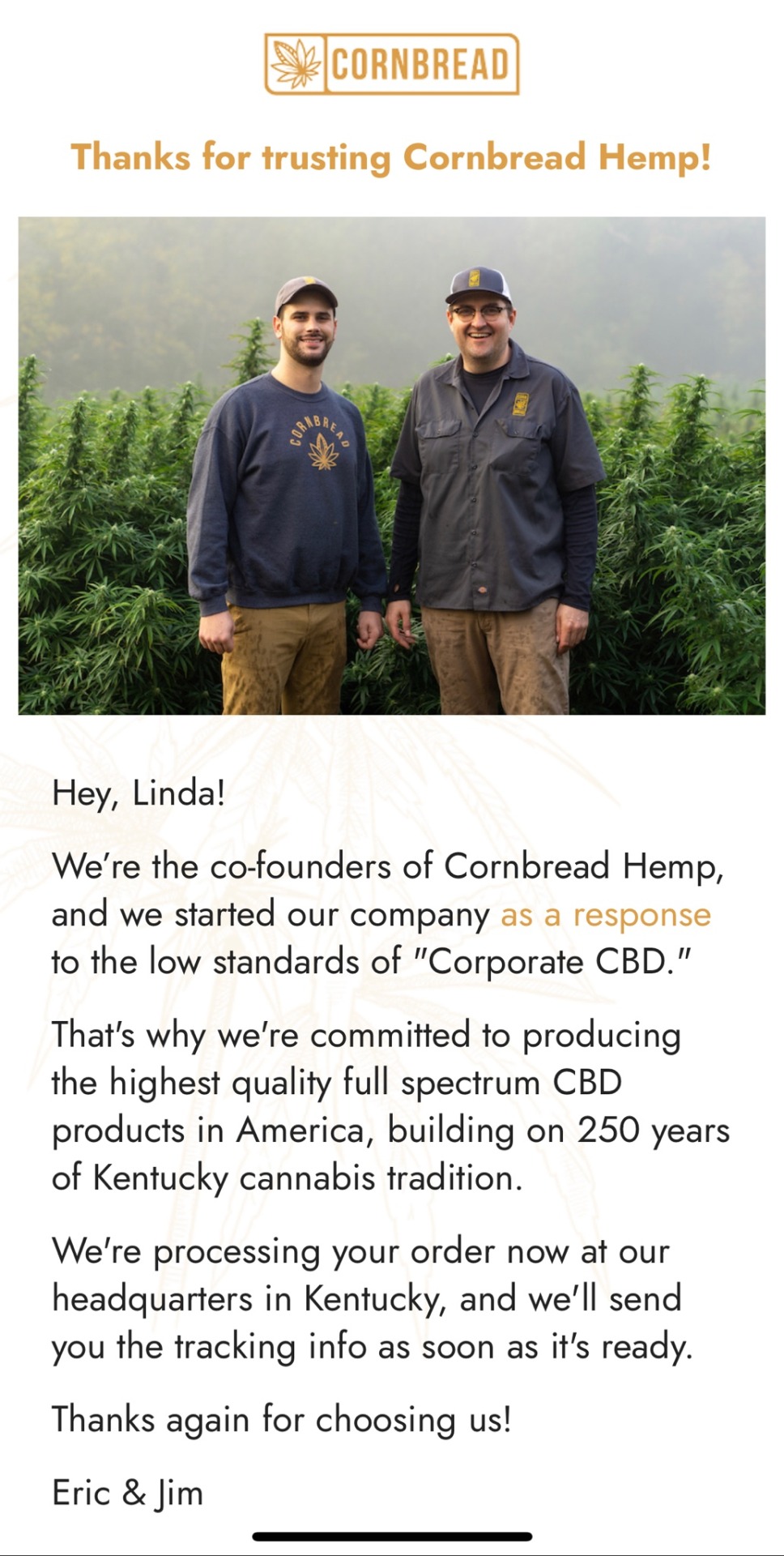
Supporting local(ish) legal options and love the brand name. 🌽 🍞 🔥
#cbdproducts#cornbread#hemp flowers#kentucky#hemp farming#fullspectrumtincture#entourage affect#organic#terpenes#nature’s gift#endocannabinoid#flavonoids#holistic medicine#gift from god#so many uses#miracle plant#anxietyrelief#what a relief
0 notes
Text
THE FLOAT TRIP
When Brownlow and Kristy heard the banjos, they started paddling like two maniacs.
The following is an excerpt from:
MY INSANE YEAR AS A HEMP FARMER
For Spring Break of 2019, my buddy from Colorado brought his wife, daughter, and Chihuahua down to our Arkansas cabin for the week. Brownlow and I had been talking about a float trip down the Buffalo National River for six years and we were finally making it happen.
I met The Townsends when I was living in Boulder in the…

View On WordPress
0 notes
